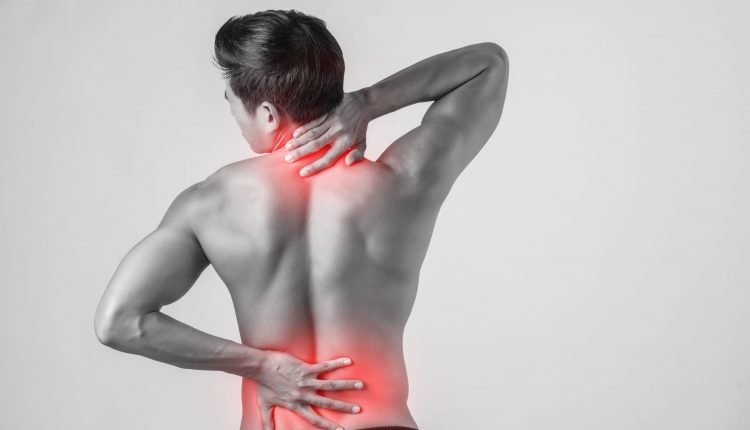Does Electric Stimulation Help Back Pain?

Back pain is a prevalent health issue affecting millions of people worldwide. It can be caused by various factors, such as muscle strain, injury, or degenerative conditions like arthritis. The quest for effective pain relief methods has led to the exploration of various treatments, one of which is electrical stimulation. Specifically, Transcutaneous Electrical Nerve Stimulation (TENS) and Electrical Muscle Stimulation (EMS) have gained popularity as potential remedies for back pain.
Understanding Electrical Stimulation:
Electrical stimulation involves the use of low-voltage electrical currents to modulate the nervous system and provide pain relief. The two primary types of electrical stimulation used for managing back pain are TENS and EMS.
1. Transcutaneous Electrical Nerve Stimulation (TENS):
TENS is a non-invasive pain management technique that uses a small, battery-operated device. The TENS unit consists of electrodes that are placed on the skin near the site of pain. These electrodes deliver electrical impulses that stimulate the nerves and interfere with pain signals reaching the brain. By doing so, TENS can provide temporary relief from back pain.
2. Electrical Muscle Stimulation (EMS):
EMS, also known as neuromuscular electrical stimulation, targets muscle groups rather than nerves. The device sends electrical pulses through the skin to the muscles, causing them to contract and relax rhythmically. EMS is often used in physical therapy to help strengthen muscles and improve muscle function, which can indirectly aid in reducing back pain.
Mechanism of Pain Relief:
The exact mechanisms through which electrical stimulation alleviates back pain are not fully understood. However, several theories have been proposed:
Gate Control Theory:
According to this theory, the electrical impulses from the TENS unit activate non-painful nerve fibers, known as A-beta fibers. These fibers can inhibit pain signals carried by smaller A-delta and C-fibers, effectively “closing the gate” to pain transmission.
Endorphin Release:
Electrical stimulation is believed to trigger the release of endorphins, the body’s natural painkillers. These endorphins can help reduce the perception of pain and induce feelings of well-being.
Muscle Relaxation:
EMS can cause muscle contractions and relaxation, which may help reduce muscle tension and spasms, contributing to pain relief.
Central Modulation:
Electrical stimulation may influence the central nervous system, including the brain, leading to a reduction in pain perception.
Clinical Studies and Research:
Numerous studies have been conducted to investigate the efficacy of electrical stimulation in managing back pain. While some research suggests positive outcomes, there is still a lack of definitive evidence supporting its universal effectiveness. Results may vary depending on the individual, the type of back pain, and the specific stimulation technique used.
1. TENS Studies:
Several clinical trials have explored the use of TENS for back pain relief. A randomized controlled trial published in the Journal of Pain and Symptom Management in 2020 demonstrated that TENS provided significant pain relief for cancer patients with chronic lower back pain.
Another study in the Journal of Orthopaedic & Sports Physical Therapy reported that TENS, when combined with physical therapy, improved functional outcomes in patients with chronic low back pain.
2. EMS Studies:
EMS has been studied for its effectiveness in improving muscle function and strength. Research in the European Journal of Pain showed that EMS improved muscle function in patients with chronic back pain, contributing to overall pain reduction.
A study in the Journal of Back and Musculoskeletal Rehabilitation found that EMS, when used as an adjunct to conventional therapy, helped reduce pain and disability in individuals with lumbar osteoarthritis.
Electrical Stimulation and Other Treatments:
Electrical stimulation is often used in combination with other treatments for back pain management. Some common therapies and interventions include:
Physical Therapy:
Electrical stimulation may be used alongside traditional physical therapy to enhance the effects of exercise and manual techniques for pain relief and rehabilitation.
Medications:
For more severe cases of back pain, healthcare providers may recommend pain-relieving medications or anti-inflammatory drugs.
Spinal Cord Stimulation (SCS):
SCS is a more advanced form of electrical stimulation used for chronic back pain that is unresponsive to other treatments. It involves the surgical implantation of a spinal cord stimulator that delivers electrical pulses directly to the spinal cord.
Surgery:
In cases of severe back pain resulting from structural issues like herniated discs, surgery may be considered when conservative treatments are ineffective.
Risks and Side Effects:
Electrical stimulation is generally considered safe when used correctly. However, there are some risks and side effects associated with its use:
Skin Irritation:
Prolonged or improperly placed electrodes may cause skin irritation or burns.
Muscle Soreness:
Some individuals may experience muscle soreness or fatigue after EMS sessions.
Tolerance:
Over time, the body may become tolerant to the effects of electrical stimulation, reducing its effectiveness.
Allergic Reactions:
Rarely, individuals may experience allergic reactions to the electrode adhesive.
Conclusion:
Electrical stimulation, particularly TENS and EMS, has emerged as a potential non-invasive method for managing back pain. While research and clinical trials have shown promising results, the effectiveness of electrical stimulation may vary from person to person and depends on the underlying cause of the pain. As with any medical treatment, it is crucial to consult with a qualified healthcare provider or pain specialist before using electrical stimulation devices, especially for chronic back pain or more severe conditions.
As the field of research and medical advancements continues to evolve, electrical stimulation may become an even more integral part of pain management strategies, offering relief and improved quality of life for those suffering from back pain and related conditions. Always prioritize open communication with your healthcare provider to explore the most appropriate and effective treatment options tailored to your specific needs.


Comments are closed.